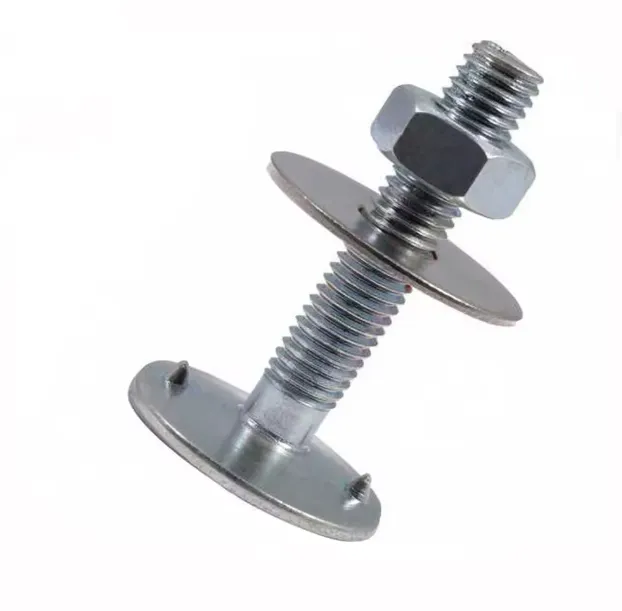

Self-Drilling Screws for Efficient Ductwork Installation and Maintenance Solutions
Okt . 05, 2024 11:48 Back to list
Self-Drilling Screws for Efficient Ductwork Installation and Maintenance Solutions
Self-Tapping Screws for Ductwork An Essential Guide
When it comes to installing ductwork, a crucial yet often overlooked component is the fastener that holds it all together. Self-tapping screws have become a preferred choice for securing ductwork in HVAC systems due to their efficiency and reliability. Here, we'll delve into the significance of self-tapping screws, their benefits, and the best practices for their use in duct installations.
What are Self-Tapping Screws?
Self-tapping screws are specialized fasteners designed with a tapered end that enables them to drill their own hole as they are driven into materials. This feature not only makes installation faster but also eliminates the need for pre-drilling, which can be particularly advantageous in tight spaces where maneuverability is limited. These screws are typically made of steel and are coated with materials to resist corrosion, making them well-suited for various applications, including HVAC ductwork.
Advantages of Using Self-Tapping Screws in Ductwork
1. Speed of Installation One of the most significant benefits of using self-tapping screws is the quick installation process. The ability to drive the screws directly into the duct material saves time and labor, which can lead to cost savings on projects.
2. Strong Hold Self-tapping screws provide a robust grip, ensuring that ducts stay securely fastened even in conditions with fluctuating temperatures and potential expansion or contraction of materials. This is essential for maintaining the efficiency of the HVAC system.
3. Versatility These screws are available in various sizes and types, suitable for a range of materials, including sheet metal, plastic, and even wood when needed. This versatility makes them ideal for customized ductwork installations.
4. Reduced Risk of Damage Unlike traditional screws, self-tapping screws minimize the risk of splitting or damaging the duct material, which can occur with pre-drilled holes. This characteristic is particularly important when working with thinner sheet metal.
self tapping screws for ductwork

5. Corrosion Resistance Self-tapping screws designed for HVAC applications often come with protective coatings, such as zinc or galvanization, which enhances their resistance to rust and corrosion. This is vital in maintaining the integrity of ductwork, especially in humid environments.
Best Practices for Using Self-Tapping Screws
While self-tapping screws offer numerous benefits, their effectiveness largely depends on proper application. Here are some best practices to ensure optimal results
- Choose the Right Size Select the appropriate screw size for the duct thickness and material. If the screw is too long, it may protrude and cause issues; if it's too short, it won't provide a secure hold.
- Utilize a Driver Tool Using the right power tool for driving self-tapping screws can enhance efficiency. A variable-speed drill or a dedicated screw gun helps control the speed and torque, preventing overdriving that could damage the duct material.
- Space the Screws Appropriately Follow the guidelines for spacing screws to ensure even distribution of pressure and support. Generally, 12 to 16 inches apart is recommended, but it may vary depending on the specific project requirements.
- Inspect for Integrity After installation, it's essential to inspect the secured ducts for any loose screws or signs of wear. Regular maintenance checks can help identify potential issues before they escalate.
Conclusion
In summary, self-tapping screws are an indispensable tool in ductwork installation, providing speed, strength, and versatility. By adhering to best practices and selecting the appropriate materials, contractors and DIY enthusiasts alike can ensure a secure and efficient HVAC system. Whether in residential or commercial applications, these fasteners play a vital role in creating reliable and long-lasting ductwork solutions.
Latest news
-
Similarities and Differences Between Plain Washer and Spring Washer - Fastener Comparison Guide
NewsJun.10,2025
-
Effortless Installation Self-Drilling Window Screws - Fast, Secure, and Durable Fasteners
NewsJun.10,2025
-
Self Drilling Stucco Screws for Fast, Secure Installation Self Tapping & Self-Tapping Fasteners
NewsJun.10,2025
-
Premium Hot Dipped Galvanized Self Tapping Screws - Durable Corrosion Resistance
NewsJun.09,2025
-
Discover M12 Weld Stud Benefits & Applications Guide
NewsJun.09,2025
-
M25 Stainless Steel Washers High-Durability Fasteners for Corrosion Resistance
NewsJun.09,2025

